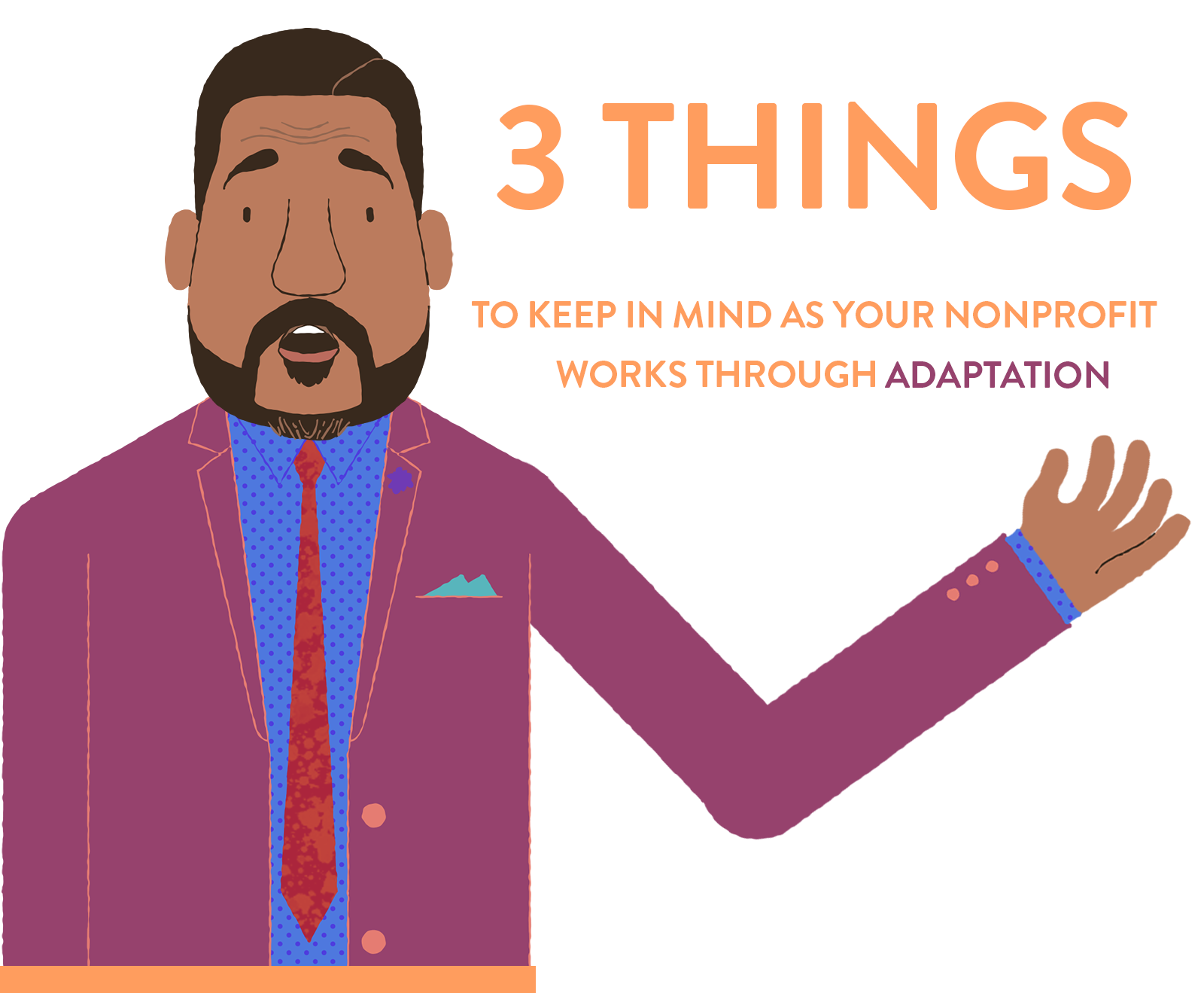
BY DAMEUN STRANGE

1) Make Sure Your Mission Is Served
Currently, there is more comfort in the sector with the idea that a nonprofit is a business. There are some products, services, markets for which a fee for service is appropriate. Social enterprise is not new; nonprofits have been earning income for some time now.
“You never own your business model, you will need a new lease eventually.” — Kate Barr
Think about social enterprise when you have a product or service that, by the very act of delivering it, will serve your mission—not a side project or unrelated income to support the “real work.” In this adaptation, the very act of delivering the social enterprise is also furthering the mission of your organization. Eureka Recycling, for example, uses nearly 100% of its earned revenue to support its mission, which is to reduce waste in the community.
One distinction should be made: organizations like Peace Coffee and Finnegans are benefit corporations or b-corps, businesses that are for-profit but want to use their profit for the greater good. They pay the same taxes as for-profit businesses, have no exempt status, derive profits entirely from business activities, and their products may or may not be related to their charitable mission.
2) Make Sure Your Organization Has The Capacity
David Nicholson, executive director at Headwaters Foundation for Justice, believes that nonprofits have to be entrepreneurial. However, nonprofits have a hard time building capital and are asked to spend all the money they make. Sustainability is about diverse revenue streams. The business mindset that it takes to be successful is different than the typical nonprofit mindset.
Define the cost.
This adaptation works if you can define the value add to the organization both in terms of value and mission. Organizations must evolve their thoughts around value as being intrinsic versus monetary.
It will become necessary to develop new muscles. Developing marketing and billing for a service is a whole different area of organizational capacity that most nonprofits don’t think about. There are also new pieces of infrastructure like customer service, research and development, and quality control that your organization may have to develop in order to be successful in your social business venture.
“If foundations care about this and want to support it, then having dollars available to help with start-up costs and for these organizations to make the transition of adding on a business to the nonprofit will be of great benefit.” — David Nicholson
As the sector looks to evolve in this current habitat, the relationship with donors and funders will also evolve. For nonprofits looking for more balanced revenue streams, the role of foundations could be one of capacity building and/or venture capital, helping these organization build the muscles and the infrastructure they need to develop these new models for sustainability.
3) Be Smart About Market Demand.
Like any for-profit business, it is important to understand the market you are entering. Do the research, and make sure there is a demand for your product. The best way to do this is in partnership with community. In all aspects of the nonprofit model it is important to value the voice of the community and for an earned income venture, it may be a life or death proposition.
“When everyone is at the table, when we hear what the community needs and utilize the community’s gifts, we move to a culture of creativity and abundance where everyone has something to offer. The answer to true nonprofit sustainability is a lived commitment to equity with no exceptions. Nonprofits who invest in the community they serve experience the return on their investment firsthand. Social capital is a powerful force for innovation.” — Kate Khaled
Deliver a quality product or service that the community wants, that they will pay for, and they will also donate to your organization. The idea that donors will be less charitable if an organization has a successful earned income mode has simply not been proven.
Realistically, products will, in time, become obsolete, programs will cycle out. If you have evolved into an organization that is adept at adaptation and improvisation, comfortable with taking risk and welcoming of bold innovative leadership, and constantly thinking about capacity, mission, and market demand based on communication with community, your organization will be fit for survival. And you will be able to write a story that doesn’t end with “The End” but “To Be Continued.”